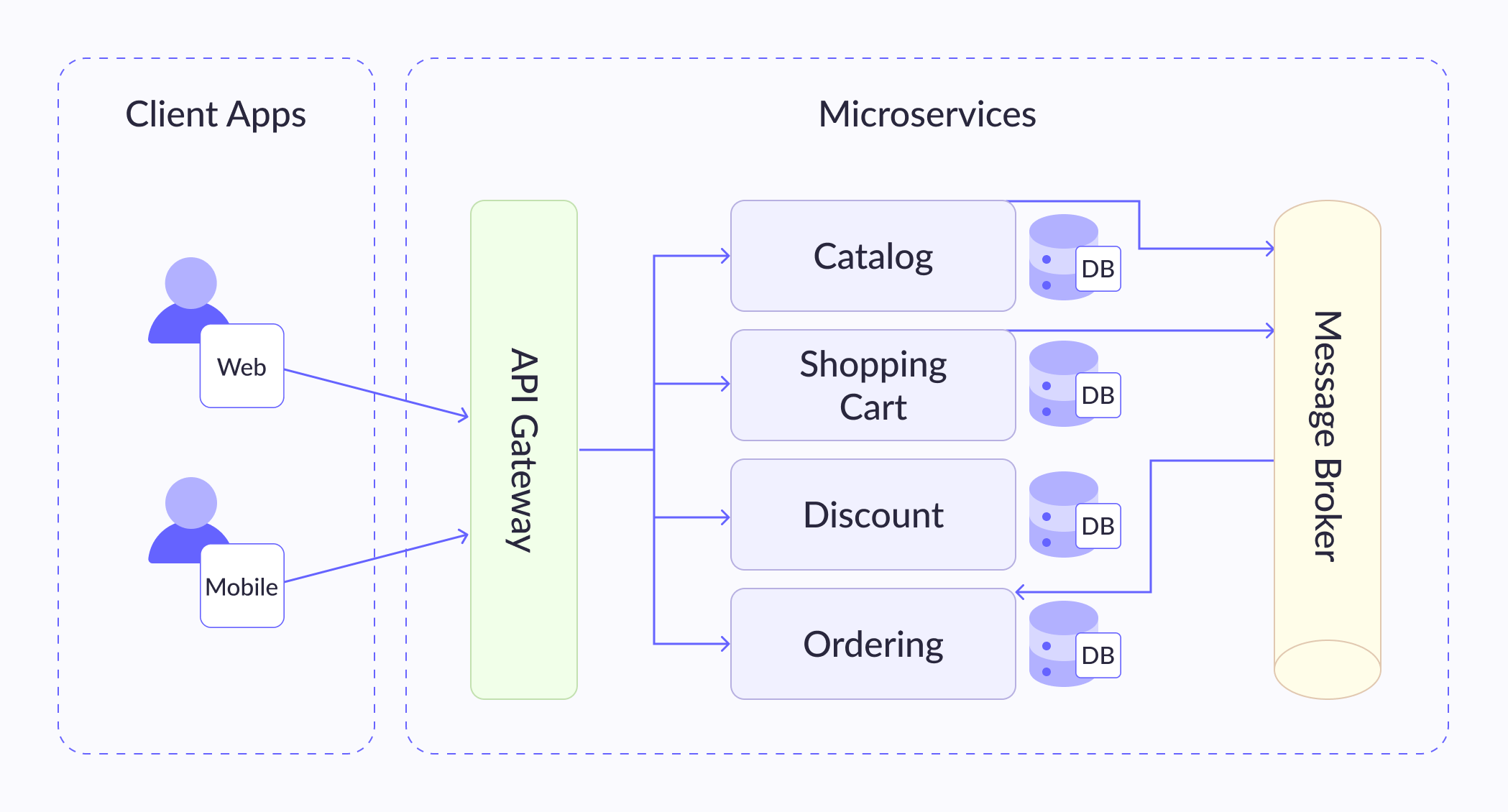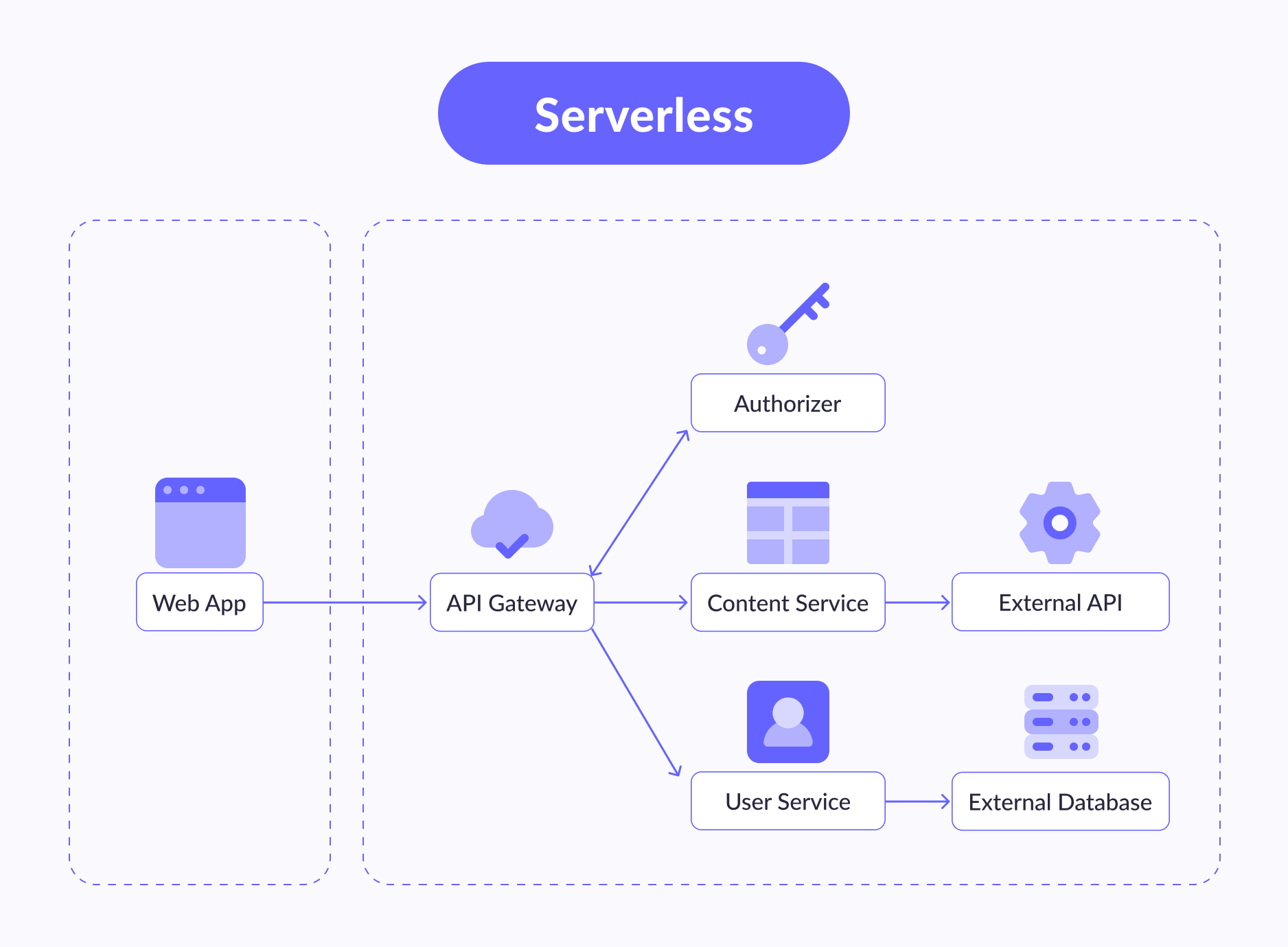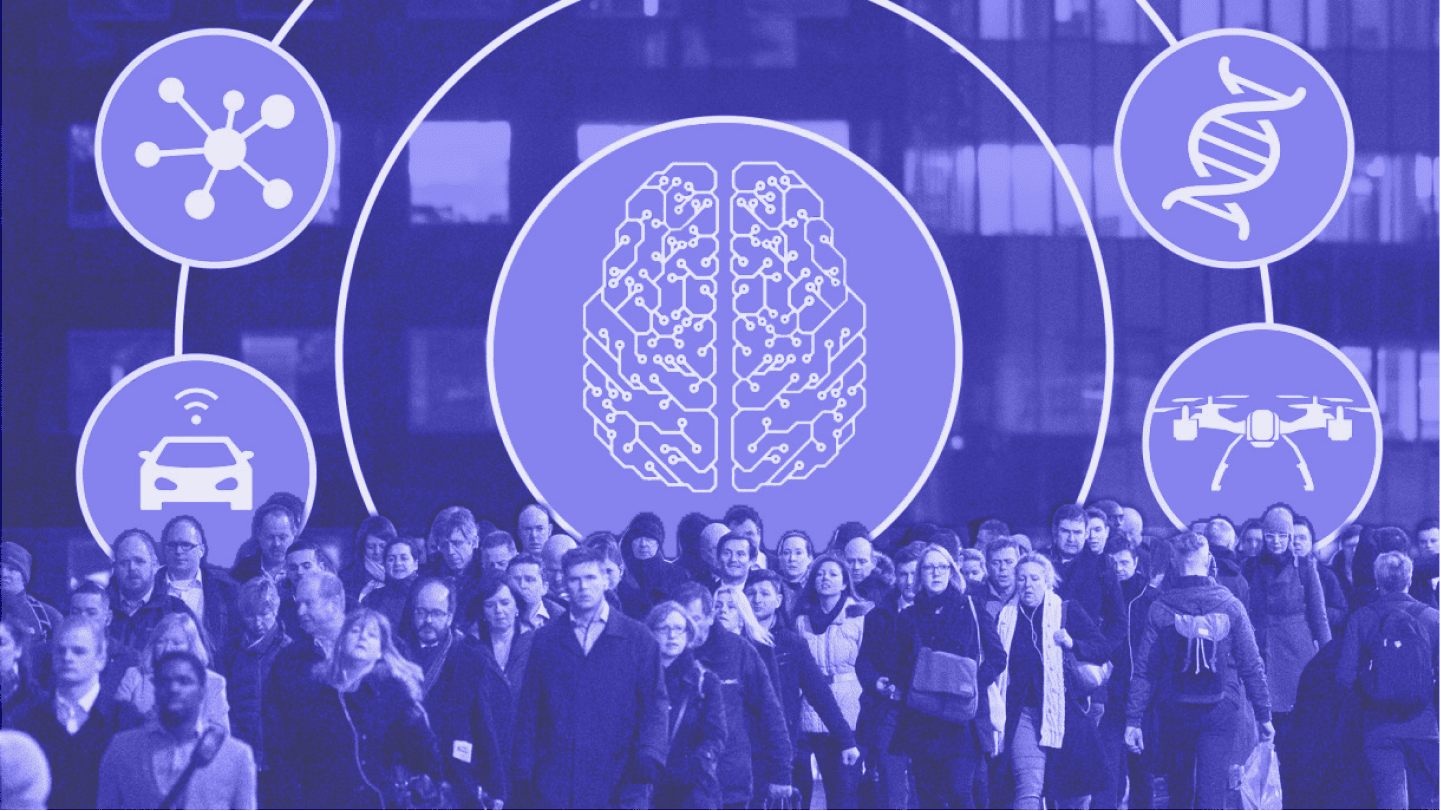In the past, many applications were built without architecture. It seemed convenient: no planning costs and faster prototyping. But over time, complex applications turned into an uncontrollable cruiser that rushed at full speed toward the iceberg. Software architecture is the blueprint that defines the structure, components, and interactions of a software system.
It was then that architecture became a real life jacket. A well-designed application is easier to extend, modify, test, debug, and understand. Application architecture is an art, the art of designing and building massive and scalable systems.
In today's article, we will compare the most common architectural solutions: monolith vs. microservices vs. serverless.
In This Article:
Monolith Architecture

A monolithic architecture is a traditional software model that is a single unit that works autonomously and independently of other applications. A monolith is often referred to as something large and clumsy, and these two words describe well a monolithic architecture for software design. A monolithic architecture is a separate large computing network with a single code base in which all business tasks are combined. To make changes to such an application, you must update the entire stack through the code base and create and deploy an updated version of the interface that is on the service side. This limits the work with updates and is time-consuming.
Monoliths are great to use in the early stages of projects to make deployment easier and not require too much mental effort to manage the code. This allows you to immediately release everything that is in a monolithic application.
Pros of Monolith
1. Easy development and easy launch of the program
Due to the fact that all development is concentrated in one place, it is easier to integrate tools for lightweight development, the same directories or libraries. Plus, if you need to change program elements, you don't need to make changes separately in different places — everything is done in one place.
2. Cross-cutting problems are practically non-existent
A large number of applications are dependent on tasks that are performed between program components: logs, rate limits, audit trails, etc. With a monolithic architecture, these problems are practically absent since everything is concentrated in one code, and everything works in one application.
3. Improved performance
If we take into account that the applications were assembled correctly, then the same application with a monolithic architecture will work more productively than, for example, with microservices. This, again, is provided by a single program code and works from a ''single'' place.
Cons of Monolith
1. Large amount of code
If the product being developed is quite large and is constantly scaling, then over time, its code grows to a huge size. This complicates its understanding and further maintenance. Plus, there may come a time when the code will be "overloaded" and lose its quality from this.
2. Difficult to upgrade
Sometimes you need to add some new "chip" to the application. With a monolithic architecture, many obstacles can be encountered in order to implement this. Because, in some cases, adding some kind of ''chip'' means completely rewriting the application. And it is long and expensive.
3. Limited flexibility
It follows from the second point that introducing something new is a whole story, and very often, this means redeploying the application since changes need to be made to all the code. The same situation applies to fixing bugs and adding updates. Update = rewritten application. Therefore, with a monolithic architecture, it is quite difficult to adapt an already running application to your needs; that is, flexibility is ''lame.''
4. Dependency between components
On the one hand, this is an advantage, as it increases productivity. But on the other hand, if there is an error in some component of the program, then this will slow down or even stop the entire application, and not just one component.
Microservices Architecture

Microservice architecture is a way of creating software products that involve the development of modules that are independent of each other. In other words, it is a common approach where an application is broken down into small self-contained components (microservices) with well-defined interfaces. It is this architecture that is typical for cloud-native applications, which are now popular due to the benefits that cloud environments open up for business. Each part of the application is responsible for a specific task and can be changed or extended without additions to others. At the same time, services interact with each other using messaging.
Simply put, microservice architecture is a division into modules in accordance with business needs. The set of technologies is individual and most often, includes storage, user interface, and external links. Each of the services can be developed in different languages and using different libraries.
Advantages of Microservices
1. Autonomy and Independence
The microservice architecture allows you to create independent cross-functional teams aimed at solving a specific business problem. These commands are self-sufficient and most effective. Each element of the IT system built in this way performs the necessary function so it can be conveyed to production independently of other services.
2. Ability to Use Different Technologies, Multiplatform
Through microservices, you can combine different technologies, choosing the best possible solutions. And the use of standard interaction protocols (HTTP calls via API, message brokers) allows you to write microservices in different programming languages and use different data storage technologies. In addition to the above, microservices are able to function on any device, in cloud environments and on-premises.
3. Good Scalability
Of course, we are talking about a new quality of scalability because if necessary, you will not need to scale the entire system and disassemble it to the ground — it will be enough to make changes only in a specific area of the IT system.
4. Better Software Security
This is due to the fact that each individual module is an independent element of the program. In the event of a failure or attack on any module, the rest of the program will work and be safe.
5. Easier maintenance and understanding of the project
For example, if a new developer comes to the project, then he only needs to study the module for which he will be responsible and on which he will work. He does not need to study the entire code of the program at all.
6. Deeper User Understanding
The standard development design model used by most companies implies that after creation and implementation, the product is transferred to support specialists, and the development team is disbanded. In the case of a microservice approach, the scheme of work changes: the same development team that created this system is engaged in the support and development of the product. The advantage for businesses is that specialists responsible for using the application communicate with users more and more often, which means they will be able to fine-tune the functionality and make changes.


Thank you for Subscription!
Disadvantages of Microservices
1. The communication between the services themselves is complex
Since each functional element is isolated, special care is required when building competent communication between them because, in any case, they will have to exchange requests and responses with each other. It is clear that the complexity of building their message will increase with an increase in the number of services.
2. Difficulty in Implementation
Dividing an application into microservices entails a large number of management artifacts. MSA requires planning and resources. The role of process automation, testing, and deployment is also increasing, which, in turn, increases the requirements for monitoring services.
To implement a microservice architecture, companies will have to implement a DevOps culture and ensure interaction between developers, testers, etc. That is, to change the style of thinking, especially when it comes to the transition from a monolith.
3. Performance Degradation
When you decide to use microservices architecture, you should be ready for network latency increases. You should understand that there will always be a delay in the communication of services, and losses can be minimized by planning the product architecture.
4. Complexity of Regression Testing
Regression testing is needed to make sure that fixing some bugs did not lead to the emergence of new ones already in other services. When conducting regression testing, you will have to raise all the microservices at once.
In this case, the difficulty is that you have to test more: not only individual services, but also their interaction with each other. This greatly increases the time and resources that will be spent on testing, and the business, alas, is not ready for this.
Serverless Architecture

Serverless architectures represent a paradigm shift in cloud computing, where developers can focus solely on code without managing servers. In a serverless architecture, an external cloud provider is responsible for managing the server. Developers just need to worry about the code; the service provider will take care of security updates, load balancing, capacity management, scalability, logging, and monitoring.
The entire application can be run using a serverless architecture or only part of it. As soon as the application code starts, the server allocates resources to it and releases them when the application is no longer in use, so this is only required when the application is in active use.
The application owner is only charged for the time the application is used. Cloud service companies provide Backend-as-a-Service (BaaS) and Function-as-a-Service (FaaS).
Pros of Serverless
1. Automatic Application Scalability
After switching to a serverless architecture, providing infrastructure resources will no longer be a headache for you. Developers can easily code, build, and deploy business apps and websites in less time. In addition, this kind of cloud solution will provide users with full-fledged automated scalability if necessary to attract additional computing resources.
2. More Сonvenient Deployment Environment
Serverless infrastructures make it easier and more convenient for programmers to develop and deploy their applications. Now, they do not have to worry about minor things, such as maintaining infrastructure or ensuring timely data synchronization. The inherent flexibility of the serverless architecture ensures ease of automation for most workflows. A well-designed software architecture facilitates code reuse, making it easier to develop and maintain software over time.
3. Economic Efficiency
Cost minimization is perhaps the most important factor that makes serverless infrastructure stand out from countless other cloud solutions. It is the payment for the actual amount of resources used that helps avoid unnecessary costs in the development and deployment of applications. You pay only for those periods of server operation when certain scheduled events trigger corresponding actions in the cloud.
4. Stability
Serverless architecture allows you to shift the lion's share of data and infrastructure management responsibilities to the shoulders of the cloud service provider. Thus, the ability to not worry about infrastructure provisioning, orchestration, and distribution of code data, as well as solving resource idle problems — all of which were huge headaches when working on local software platforms of the previous generation — will save your team a huge pool of time.
5. Reducing delays
Companies are able to place their resources on the closest available servers for end users using cloud servers to deploy infrastructures. This ensures ease of connection and compatibility of data formats in the absence of time-critical failures and system downtime.

Some insights
Banking Cloud Security: How Safe Is It To Store Your Data In The Cloud?
As many industries and sectors continue to be redefined and reshaped by the cloud, financial services have some of the greatest potential to excel with the cloud. Explore the features and benefits of digital banking industry solutions.
Read moreCons of Serverless
1. Dependence on Service Provider
When you hand over control to a cloud service provider, you must play by their rules. However, it will not be easy to, say, migrate your application to Azure if you have already configured it on Lambda. The same applies to programming languages: right now, only Node.js and Python developers can freely choose between existing serverless solutions.
2. Steep learning curve
Despite the comprehensive documentation and many informational resources, you may find that the learning curve for FaaS tools is quite steep. In addition, to seamlessly transition to serverless mode, you need to split the code into microservices — this is another technically difficult task that needs to be solved. That's why it's preferable to seek help from professionals who have experience with serverless tools.
3. Not Suitable for Big Tasks
Lambda gives you five minutes to complete the task. If the process takes longer, you will have to call another function. Serverless mode is great for simple processes that can run in real time, like sending emails. But long-running operations, such as downloading video files, will require additional FaaS features or the use of a traditional cloud architecture.
Why Choose Geniusee
For the successful functioning and development of a business, it is important to build the right IT architecture for the company. This largely determines not only the speed of project tasks but also the correct distribution and organization of all internal business processes.
Geniusee has experience with the development of each of the mentioned types of architecture. Below, you can find case studies for each type.
Monolith Architecture for White Lable Platform
We started development by creating a monolithic application architecture. This allowed us to deliver a more explicit code on common C# convention using concepts of domain-driven design. We recommended our client a better cloud system and based the platform on AWS services. Our DevOps experts tailored a custom architecture diagram. A thoughtful approach to this stage allowed us to customize multiple features afterward.
Serverless Architecture for Best Music Coach
This web platform is based on a serverless solution. We decided to work with AWS to ensure the security of those who teach and learn music and for scalability and cost reduction, both operational and development.
Here, we implemented many custom solutions, crossing multiple experimental ways, which made working on the project exciting. The platform is based on AWS services, Lambda in particular. It uses the Apollo server, which is built in Lambda.
Contact Us, and Geniusee architecture experts will help you to choose the right architecture and get the most out of it for the business.
Summary
In this article, we compared the three most common types of software architectures — monolithic vs. microservices vs. serverless. Concluding advice — when you are planning to develop a web service, site, or application, before choosing an architecture, you should clearly formulate your expectations from the product: attendance, integration with other accounting systems, scalability, and other important factors. Try to involve experienced architects already at the planning stage in order to competently lay the foundations for the future product for years to come.





















